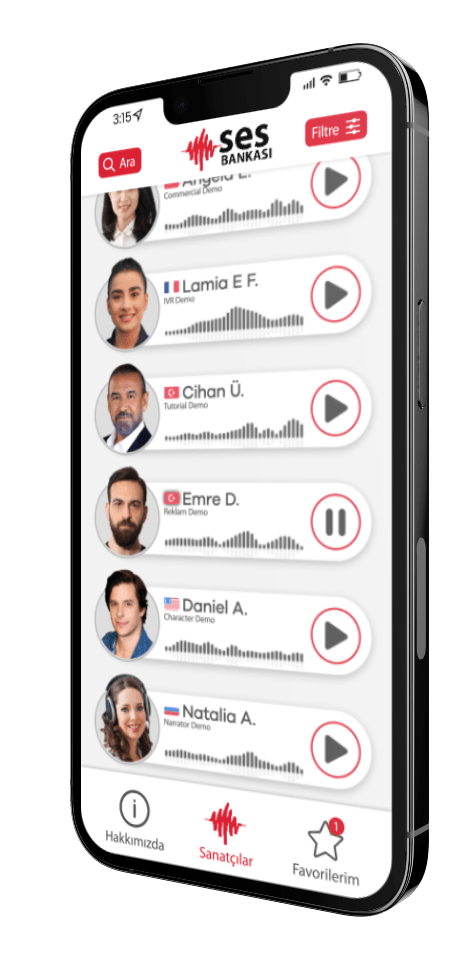What is a Brief? What Does a Brief Do?
Before we start our content called What is Brief, we would like to start by explaining the Turkish equivalent of the word 'Brief'. 'Brief' means to describe briefly, to outline or to pre-tell. In business life, there is a stereotyped usage as “giving a briefing”. In general, we can say that it is widely used in the media sector.
Briefly; It is the name of what the agencies briefly describe the company, brand, product, service, market, sector in their first meeting with the advertiser. Firms submit information about their dynamics, competitors and industry to the agency. This presentation process is 'brief'. Voice Over The same is true for the agency. Voice Over agencies in accordance with the brief they receive from the client. ad texts They plan by preparing and developing strategies.
What is a Brief: What Does a Brief Do?
The shortest answer to the question of what does a brief do is: It is a document that clearly states all the details necessary for the successful completion of a project. The brief, which is used in different areas such as voice over, dubbing, advertising, promotion, training or information, serves as a roadmap for the project. Brief also has a special importance for production companies that serve in the field of voice-over and dubbing. Because, regardless of the service branch of the voice-over, it is necessary to establish a tight dialogue with the brand. In order to explain the "problem" of the brand well, it is necessary to understand them very well. A good brief therefore means a successful project.
The brief defines the purpose, audience, message, tone, duration, budget and outcome of the project. This information ensures that the project is managed correctly and that the project achieves its goals. In addition, the brief facilitates the division of labor between team members during the project process. Working in a dubbing or dubbing studio voice actors, Once technicians and directors have a clear understanding of the project's goals and expectations, they can act correctly.
As a result, the brief is an important tool used to clearly define the goals and requirements of the project. In this way, it is possible to manage projects correctly, achieve targeted results and ensure customer satisfaction.
Things to Consider While Preparing or Giving a Brief
Creating a brief is the best way for the brand to express itself to the agency. Putting this “brief” in writing and implementing it after the project is created; will ensure that the expectations of the brand are met. In this respect, it is important to ask the right questions both when giving and receiving a brief.
You will get much better results if you pay attention to the following details while giving a brief:
- Understand your target audience: When preparing a brief, it is important to understand the target audience of the project well. Identify who is being targeted and what type of message is intended to be delivered.
- Determine the purpose of the project: When preparing a brief, clearly define the purpose of the project. Is it for advertising, promotional, educational or informational purposes? This information will help you determine the direction of the project.
- Determine the tonality: When preparing a brief, it's important to set the tone for the project. According to its function and purpose, how formal or how friendly and warm should the project be? This will also be a guide for artists and technicians who will work in a dubbing or dubbing studio.
- Determine the duration of the project: When preparing a brief, it is important to determine how long the project will take. This is determined by the nature and tone of the project.
- Determine the desired result: When preparing a brief, it is important to determine what kind of impact should be created on the outcome of the project. The purpose of advertisements may be to encourage consumers to purchase a particular product or service. Educational projects can target those who want to learn about a particular topic.
- Set the budget: When preparing a brief, it is important to determine what the budget is. This will determine the scope of work that can be done by the dubbing or dubbing studio.
- Set the dates: When preparing a brief, determine if there is a set date or dates for the project. This ensures that work is completed on time and deliveries are made on time.

Brief Examples: How to Give a Brief for the Voice Over and Dubbing Industry?
Below is a hypothetical project brief:
Project: English dubbing for a domestic TV commercial
Target: A broad target audience between the ages of 25-40
Tonality: Emotional, sincere, persuasive
Duration: 30 seconds
Concept: The advertisement was made to emphasize the importance of health services provided to the local people. The ad features footage of a local man using health services and features an English voiceover.
Dubbing Notes: The tone of the English dubbing should be sincere, emotional and persuasive. The voice actor should explain the importance of health services to the audience, while at the same time trying to impress the audience using a humane and emotional tone.
Sample Text:
“Health is the most important part of our life. However, it is not always possible to get the support needed to stay healthy. Fortunately, we are here for us. We strive to provide our local people with the best quality in healthcare. With us, you never have to worry about your health concerns. We are here, working together to create a healthier society.”
This sample brief was prepared for a local TV commercial to be dubbed in English. The brief draws attention to important factors such as target audience, tone, duration and concept of the project. The brief provides detailed information such as the desired tone of the dubbing artist, text samples and the objectives of the project. This information ensures that the dubbing studio is working towards the project correctly, and the result is a successful dubbing recording.






















